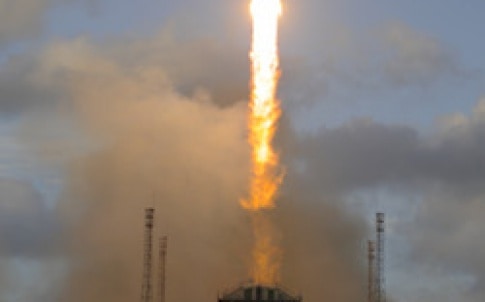Satellite launch promises real-time radar imaging of northern hemisphere
Key environmental data will be accessible on a routine basis following the launch of ESA’s Sentinel-1A satellite.

According to the European Space Agency, (ESA), the 2.3 tonne satellite lifted off on a Soyuz rocket from Europe’s Spaceport in Kourou, French Guiana at 2102 GMT, with the first stage separating 118 seconds later, followed by the fairing (209 seconds), stage two (287 seconds) and the upper assembly (526 seconds).
After a 617 second burn, the Fregat upper stage delivered Sentinel into a Sun-synchronous orbit at 693km altitude. The satellite separated from the upper stage 23 minutes 24 seconds after lift-off.

‘Sentinel-1A opens a new page in the implementation of Copernicus, the second EU flagship space initiative, after the Galileo positioning system,’ Jean-Jacques Dordain, director general of ESA said in a statement. ‘The Copernicus programme will provide European citizens with the most ambitious space-based services in the world for environmental and security applications.’
The mission is the first of six dedicated missions that will make up the core of Europe’s Copernicus environmental monitoring network, which is designed to provide operational information on the world’s land surfaces, oceans and atmosphere to support environmental and security policymaking.
Register now to continue reading
Thanks for visiting The Engineer. You’ve now reached your monthly limit of news stories. Register for free to unlock unlimited access to all of our news coverage, as well as premium content including opinion, in-depth features and special reports.
Benefits of registering
-
In-depth insights and coverage of key emerging trends
-
Unrestricted access to special reports throughout the year
-
Daily technology news delivered straight to your inbox










Water Sector Talent Exodus Could Cripple The Sector
Well let´s do a little experiment. My last (10.4.25) half-yearly water/waste water bill from Severn Trent was £98.29. How much does not-for-profit Dŵr...